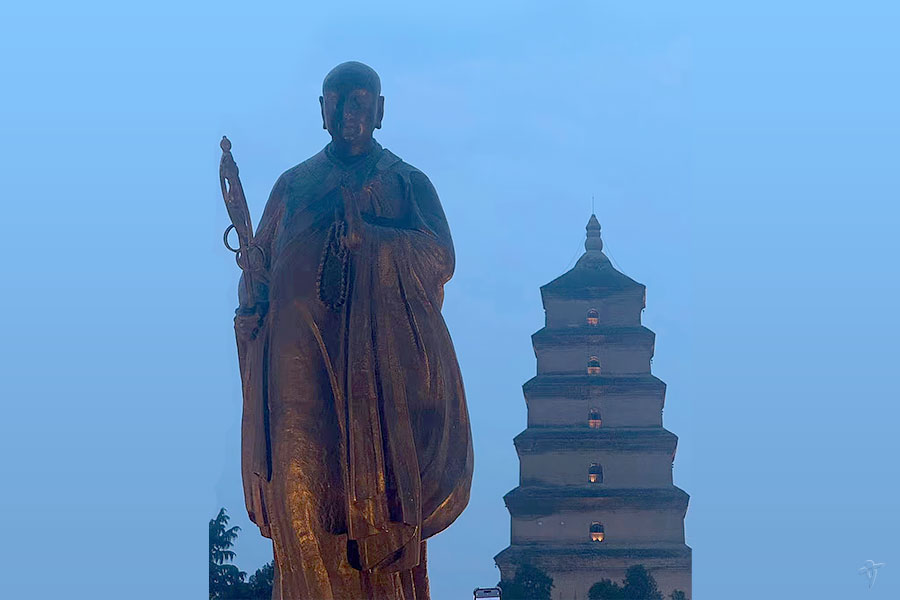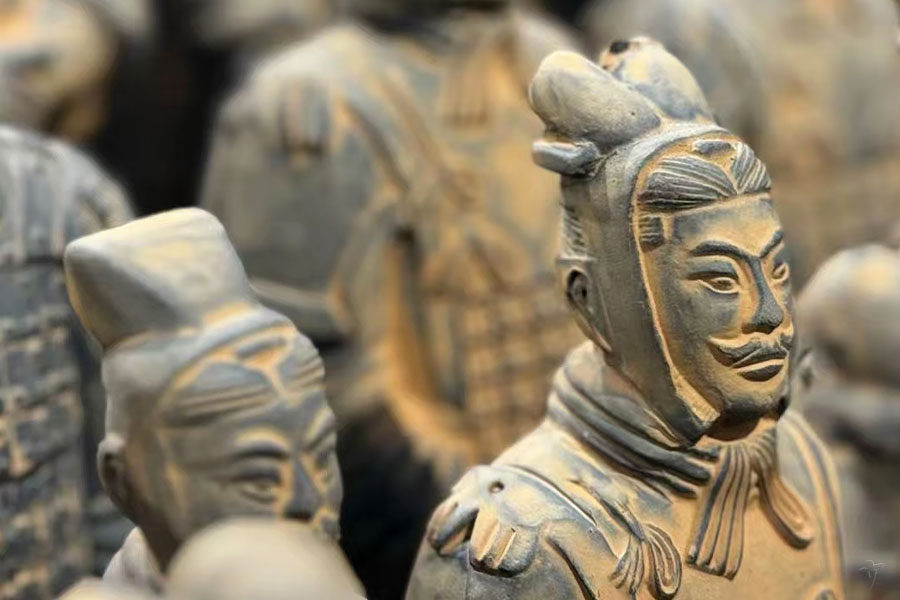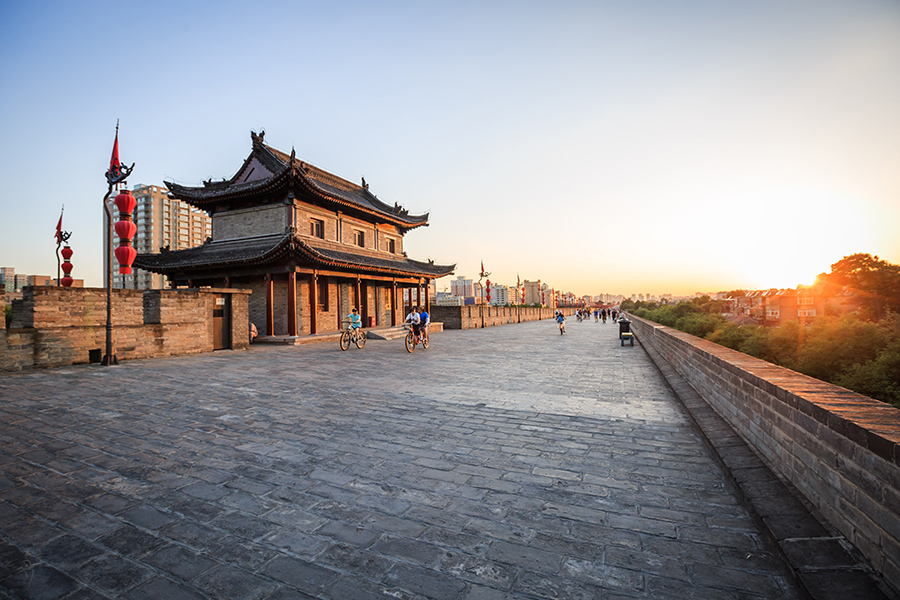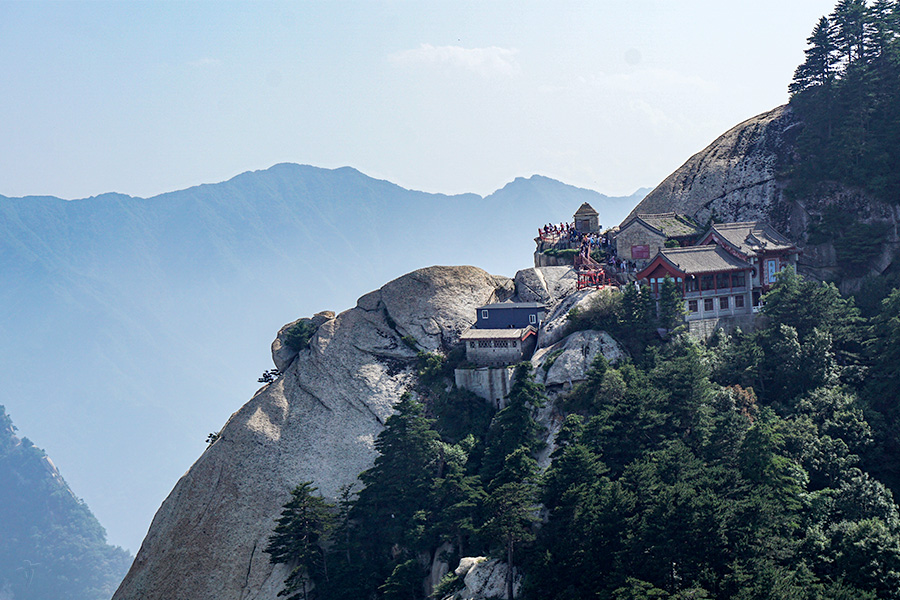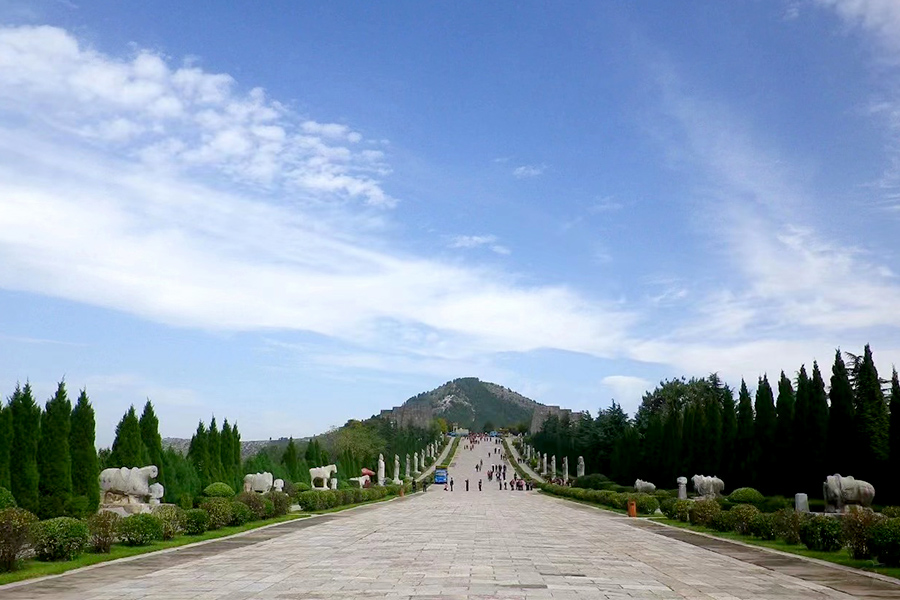The Terracotta Army and Horses
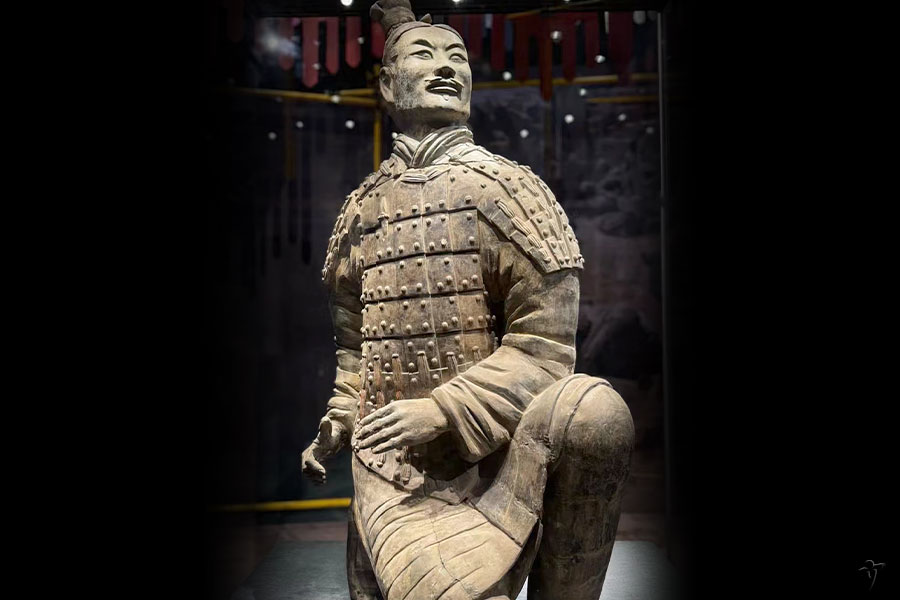
Chinese name: 秦陵兵马俑 (Qinling Bingmayong)
Location: Yanzhai County, Lintong District, around 1.5km east of Emperor Qin Shihuang's Mausoleum, Xi'an city, Shaanxi Province.
Opening time: 8:30-18:00
How to get there:
- Bus: 306 (No.5), 307, 914, 915 or Special Line 101.
- From Xian Xianyang International Airport: Airport Shuttle Line 2 to Xian Railway Station (25 RMB)
- From Xian Railway Station: Tourism Bus no.5 (306), 914 or 915.
- Taxi: about 120 to 200 RMB (depending on where you catch a cab, but make the fare clear with the driver before leaving to the site)
Best time for visit: all year long
Recommended time for a visit: 3 hours at least
One of China's greatest attractions and a UNESCO protected human masterpiece
Standing as one of the 10 top attractions of China, the Terracotta Army and Horses is definitely a "must-see" scenic spot of the age-old city of Xi'an, the "Eastern Peace". This large-scale underground military museum is recognized today as one of the most significant archeological excavations of the 20th century, a unique historical site never seen anywhere else in the world. The Terracotta Army is the buried army replica of Emperor Qin Shihuang, the First Emperor of China, guarding the tomb of the Emperor in his after life and accompanying him in his immortality. Representing the Qin Dynasty (211-206 BC) military power, these thousands of life-size figures arranged in a large-scale battle formation are impressive by there size, number and detailed looking. Today, over 8,000 soldiers, 130 chariots with 520 horses and 150 cavalry horses can be seen in the site. As one of the most famous attractions of China together with the Great Wall or the Forbidden City, the Terracotta Army and Horses scenic spot is attracting thousands of visitors coming from every parts of the world. Now part of any tour packages or visits to Xi'an and China, the Terracotta Army site is the place where meeting with China ancient Imperial Power and great culture that flourished since the beginning of the Qin Dynasty. Discovered in 1974, the site has been ranked as a UNESCO World Heritage Site for its marvel and need for preservation to future generations. Today, visitors can still notice archeologists' ongoing work on the site and in the three different pits, a sight giving an even deeper meaning to such a visit in China.
History around the Terracotta Army and Horses
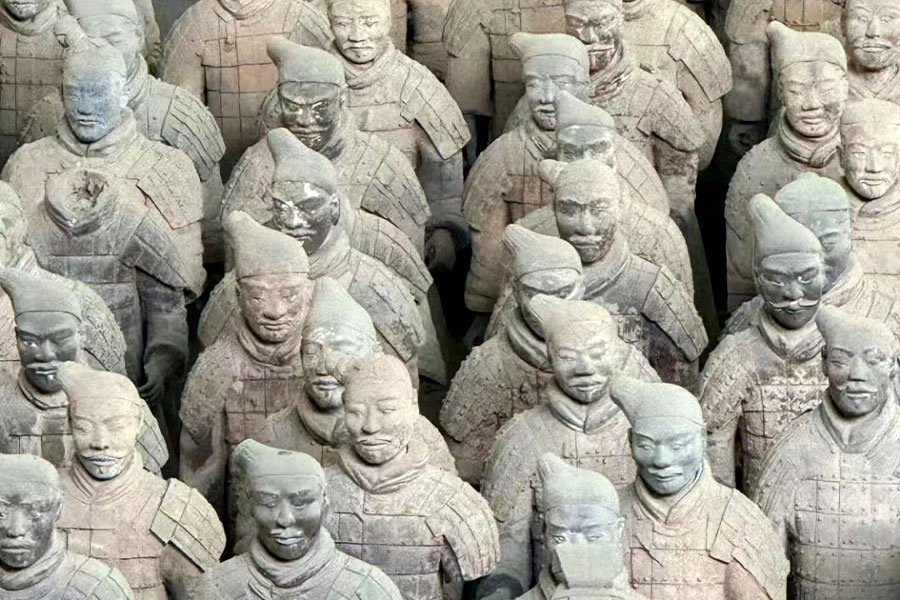
When visiting such a marvelous place, one should be aware of the great history that is lying behind all the spots and tourist information signs. Indeed, the Terracotta Army and Horses is connected with the early ancient history of China. Everything started in 246 BC when at the age of 13, Emperor Qin Shi Huang, the first Emperor of China ascended to the throne. Most famous Emperor in China's history for he was the one who unified China 2,200 years ago and gave to the country its actual name, Qin Shihuang was responsible for the creation of many of China's outstanding buildings such as the Great Wall, the Summer Palace and here the Terracotta Army and Horses site. Built with the purpose of protecting the tomb of the Emperor and show loyalty to him after his death, the Terracotta Army and Horses site was under construction during 38 years, and around 700 000 workers were needed to complete it. Apart from the terracotta figures, many buried treasures and sacrificial objects, animals and people had accompanied the Emperor in his after life, a real discovery for today's archeologists.
The site of the Army had been discovered accidently in 1974 by a farmer who was digging a well near to its village. Discovering a terracotta head looking like a human face painted in very bright colors, the farmer brought it back home to show his discovery to his family. Curious about what this head was about, they preferred alerting officials about the discovery and finished to bring them to the very place where the farmer had found the head. Soon after did the archeologists and officials realized that the farmer was at the origin of the discovery of one of the world's most important historical site: Emperor Qin Shihuang's Terracotta Army and Horses. Extending the digs, scientists first discovered Pit No.1, the biggest vault out of the three that can be seen today. Since then, the farmer has seen his life completely changed as he is now a celebrity signing autographs and that travelers can meet at the entrance of the Terracotta Army tourist site. Soon after the discovery, the State Council authorized to build a museum on the site and in 1976, two other pits were uncovered at just 20 to 25 meters away from the first pit. Precious site for China's history and humanity as well, the Terracotta Army and Horses has been listed to UNESCO in 1987, one of the greatest discoveries of the 20th century.
Emperor Qin Shihuang – The search for immortality
In Chinese history, Emperor Qin Shihuang (秦始皇) is recognized as the First Emperor who unified China and established a unified feudal country. Ruling from 221BC to 210BC, the Emperor was an excellent political ruler although being a famous tyrant who contributed a lot to ancient China.
The Emperor was originally called "Yingzheng"(嬴政), son of King Zhuangxiang of Qin and concubine Zhao ji although some controversy have appeared around this birth and the real character of the father. With his father dying when he was just 13, the boy took his imperial name of "Qin Shihuang" (Yellow Emperor of Qin) and ascended the throne supervised by a regent: Lv Buwei who finally had the ambition to overthrown Qin Shihuang. Being closed to the little Emperor's mother Zhao ji, Lv Buwei had two children with her and was then banished from the court while Zhao ji ended under house arrest in the court. Good at dealing with civil and military affairs, Qin Shi Huang progressively succeeded in unifying the other six states during the Warring States Period (475 BCE-221BC) while foiling plots to kill him many times. This was after the establishment of the Qin Dynasty (211-206 BC) that the Emperor reformed many important parts of the Kingdom. Reforming the institution, measurement, current money, laws and so on, Qin Shihuang was a great Emperor but also a rare tyrant that is recognized as the most important for China's earliest construction.
At the origin of many large-scale constructions, the First Emperor ordered namely to dig the Ling Canal, built the Great Wall, more than 700 palaces around and outside central Shaanxi Province. Obsessed by immortality, the Emperor ordered the construction of the Terracotta Army and Horses to protect him in the after life and reach immortality. Killing thousands of people not respecting his rule, the Yellow Emperor is for sure one of the most feared Emperor of its era but an Emperor who accomplished tremendous plans for the future of China.
Terracotta Army and Horses Scenic Spot General Facts
Since the discovery of the first head of a terracotta warrior in 1974, a total of three pits and some accessory one have been discovered by archeologists still working on the site today. Facing the East, this museum is covering an area of 16,300 m2 with the 3 pits filled with more than 8,000 terracotta warriors and horses and more than 40,000 bronze weapons all looking like guarding soldiers for the Yellow Emperor of Qin. The Terracotta Army and Horses consists of 3 sections (also called "vaults" or "pits"), a series of accessory pits and an Exhibition Hall.
Pit No. 1: (14,260 m2, 210 meters long, 62 meters wide and 4.5 to 6.5 meters high)
This is the largest pit, the first discovered and the most famous one that can be seen on most of the pictures of the Terracotta Army. Composed of 3 lines of horizontal clay warriors, followed by several columns of 6,000 terracotta warriors on the foreground, and followed by 35 horse-drawn chariots on the background, Pit No.1 exhibits terracotta chariots and warriors since its opening in 1979. The excavated sculptures include more than 1,000 warriors, 8 war chariots, 32 horses and about a thousand of bronze vessels. All warriors seem well-prepared for the battle. A total of three excavation works have been proceeded in that pit, the first one in 1974, and the second one in 1985. The third excavation of Pit No.1 started on June 2009, after which new relics of 2 war chariots, more than 20 terracotta warriors and lots of vehicle components and bronze weapons have been excavated. In order to protect the site, a large arched hall has been built above the pit, providing the pit with good ventilation and daylight conditions for its preservation. By looking carefully at the pits, one will see that every three yards, a puddle wall separates the underground army into different columns. Fortified with wooden columns, earth and reeds, some of them still collapsed on the sculptures. On both the northern and southern sides of the war formation, stand 180 warriors serving as flank guards facing east and west in order to protect from the enemy. Life-like, the soldiers are a real impressive sight for anyone, giving a deep impression on what artisans created about 2,000 years ago. On top of the Terracotta figures, many weaponry including bronze arms were found in a still good preservation showing the high level of material technology already proceeding in that period of time in China. Originally all full painted in bright colors, the natural light and excavation techniques couldn't help preventing the colors to faint away with the years. When visiting the Museum, visitors should imagine the first farmer discovering a site of warriors all painted in red, black, white, pink and green colors. Currently, over ten pieces of colored terracotta warriors have been protected through the use of modern technology. The third excavation of Pit No.1 is then full of wonderful expectations on which scientists like to speculate. Excavation work of the Terracotta Army still goes on.
Pit No. 2: (7,176 square yards, 96 meters long, 84 meters wide and 5 meters high)
Located 20m North-east of Pit No.1, the second vault has been found in 1976. L-shaped and most spectacular of the three pits, it contains over 1,300 warriors and 90 chariots, crossbowmen, cavalry and infantry and thousands of bronze weapons unveiled to the public in 1994. The combat formations are more complex in that pit as the units of armed forces are more complete. Pit No.2 is where seeing the curious Green-faced Warrior on which many scientists reflect since its discovery. This pit can be divided into 4 sections:
- Section 1 - Crossbowman Warrior Squad: Eastern corner of the pit, square shape, 4 corridors around the four sides with 60 crossbowmen in standing posture, 4 east-west passageways where 160 crossbowmen are aligned in squatting posture.
- Section 2 - Chariot Commander Warrior Squad and Horse-drawn Chariots: Right of the pit, 64 war chariots divided into 8 rows, each pulled by 4 life-sized horses, 3 warriors stand side by side behind the chariot, with the middle one driving the carriage.
- Section 3 - Vehicular, Infantry Warrior and Cavalry Warrior Squad: Center of the pit, rectangular combat formation, 264 foot soldiers, 8 cavalrymen, 19 war chariots.
- Section 4 - Cavalry Warriors Squad: Left of the pit, 3 east-west passageways, cavalrymen aligned.
These 4 sections of Pit No.2 make up an impregnable fortress against the enemy.
Pit No. 3: (about 520 m2, 21.4 meters long, 17.6 meters wide and 5.3 meters high)
Looking like the command headquarter of the armed forces, Pit No.3 is situated 25 meters northwest of Pit No.1, discovered in 1976, the smallest pit out of the three. The vault in the exact shape of "凹" (Chinese character) contains 68 warriors, bronze weapons as well as gold, stone and bronze decorations, a war chariot and 4 horses, display since 1989 to the public. Attracting every visitor's attention, is the fact that many of the warriors seen in that pit are headless. Why? Archeologists believe that these warriors did have heads when originally produced about 2,000 years ago but due to many thefts from vandals, who in ancient times, had no idea about what the site was about, many heads have disappeared. Still, the splendor of Pit No.3 is amazing and making everyone marvel at what was occurring there thousands of years ago.
Apart from these three pits, other smaller pits have been found, known as accessory pits, near the three main one. The "artisans' graveyards", the "slaughter pits", the "stable pits" and the "rare birds and animals pits" are the names given to them.
Artisans' Graveyards Pit: A total of 3 artisans' graveyards have been found near to the Mausoleum of Emperor Qin Shihuang. Over a hundred of skeletons have been found in this pit, all squeezed into 32 graves. Mostly composed of males (still a woman and a child were found), these people were supposedly forced to work for the Emperor until the death of the Emperor when everyone was killed alive in one grave. All positions in different directions, the heads of the skeletons show that they were buried hastily by the tyrannical government.
Slaughter Pits: Out of the 17 slaughter pits found in the area, 8 of them have been excavated so far. Containing bronze swords and skeletons of five men and two women aged between 20 to 30. Over 200 burial objects such as animal bones, gold decorations, silver, copper, jade, lacquer works and the silk were also found in the pits. Rich ornaments and objects, questions around the persons buried in the place have been raised.
Stable Pits: In Emperor Qin Shihuang's Mausoleum, two sites containing stable pits have been found. Some of the pits contained horses, while others only a statue of a kneeling terracotta warrior. Like for the artisans, the horses are believed to have been buried alive because the four limbs appearing to be traces of the struggling animal. All of this reflects once again the First Emperor's dealing with human lives. By doing this, he wanted to bring anything he had with him to the afterworld, so that he could continue his luxurious life. This dramatic idea was then gradually adopted by Emperors in later Chinese Dynasties.
Rare Birds and Animals Pit: Largest of all the accessory pits, the Rare Birds and Animal Pit was a place for the Qin Shihuang's spirit to hunt in the afterworld. A total of 31 pits are arranged in the area but just two of them have been excavated so far. Strangely enough, coffins were discovered in the pits, inside which skeletons of animals believed to be deer were found. Statues of kneeling warriors found in the pits with the animals are today believed to symbolize the feeders of the rare birds and animals of the Imperial court.
The Exhibition Hall: is where seeing the Bronze Chariots and the museum around the discovery of all the site as well as the UNESCO ranking of the Terracotta Army. There lie relics around the most famous visitors' coming at the museum since its opening.
Since the beginning of scientists' work on the three pits, over 7,000 terracotta soldiers, horses, chariots and even weapons have been unearthed, most of them restored to their former grandeur. Differing from any other in terms of facial features and expressions, clothing, hairstyle, and gestures the Terracotta warriors are a treasure of civilization showing how China was already one of the most advanced civilizations of its age about 2,000 years ago. All kinds of military ranks can be found in the pits: horsemen, longbow bearers, archers, senior officers and generals…positioned in strict accordance with the ancient Art of War. A marvel for the eyes and for the rich cultural knowledge that is offered to scientists and historians of China and of the world. All these terracotta figures transport travelers to another world, to the time of Ancient Warring States when Emperors, kingdoms and wars where all about it. Emperor Qin Shihuang's Army and Horses are a treasure of ancient civilization, a treasure for the Chinese people.
Terracotta Army and Horses Skilled Artisans
Amazed by the large-scale human masterpiece discovered in 1974, archeologists started to wonder about the very artisans who build all of these pits and every single part of the more than 8,000 warriors and horses excavated. During their repair work, some discovered names carved on the bodies (hips, under the arms…) of the sculptures. A total of 87 people's names were written which after some researches found out to be the one of master craftsmen. Recruited by the Qin Emperor, the countless skilled artisans came from all parts of the Qin Kingdom. Each of them ground by hand to achieve a perfect thickness, the warriors, horses, chariots, and bronze crafts sculptures tried to reproduce reality to perfection. A hard work which took months to be done. About 3,600 artisans have been estimated to be needed for creating a whole armor during one year. Precious testimony of their life and work condition during the elaboration of this army, some letters hidden in bamboo slips found in the pits showed how life was hard:
"I have to work carefully every day, if I paint the weapons incorrectly, my officer will punish me very severely".
Their fate already sealed by the time they were hired by Emperor Qin Shihuang's government, the remaining artisans alive when the Emperor died were ordered to be buried alive in the tomb passages, so that the secret of the Mausoleum and its location would not be revealed. Faithful to their master and Emperor, the skilled artisans were the victims of the powerful but tyrannical era of the First Emperor of China.
Vivid Works
When visiting the Terracotta Army and Horses scenic site, this is not to be denied that the museum is of a various and vivid artistic creation full of ingenuity for that period of time. For its realization, tens of thousands of individual human and animal statues were manufactured within a series of processes meticulously done by the more than 700 000 workers who work on this masterpiece.
Creation of Terracotta Warriors
The creation of a terracotta warrior follows a drastic method starting with the molding of the legs, body and arms is a single piece of terracotta. The head is made separately for being placed afterwards on the neck. Every single warrior differs from one another in their hair style, gesture and look, what is even more impressive considering the more than 8,000 warriors excavated from the three pits by archeologists. Already skilled at using tiny details to express different characters and mental states, Qin's artisans were keen on realizing the best army looking like the real one for accompanying the Emperor in its after life. Every single warrior's eyes differ from one another, as that is the part of human body that figures as a window to a man's heart. For example, canny warriors were created with graceful eyebrows and eyes; brave soldiers with wide and staring eyes; simple and honest soldiers with a big head, wide face, bushy eyebrows and big eyes. In general, the warriors with squinty eyes and tender smile show their confidence to win the war, while the one with wide open eyes like in a fury show their hate toward the enemy. The soldiers looking down are supposed to be the one shy and quiet; the one looking forward have eyeballs in the center of the eyelids while the one looking up have eyeballs titled up slightly. Differing in term of look, the warriors also differ in term of military rank. Three military ranks can be noticed and easily differentiate from one to another: the simple soldier, the noble officer and the great general. Vivid for the gorgeous work artisans' made on the sculptures and original for it has been the only place where such meticulous works has been noticed, the Terracotta Army and Horses is a human masterpiece.
Green-Faced Warrior
When visiting the Terracotta Army and Horses today visitors see the sculptures without any single color, just of the natural color of the terracotta. However, by the time the first farmer and archeologists discovered the site, all warriors were in full bright colors, each parts of the body recovered by a different one, giving to the soldiers an even more vivid aspects and look.
In Pit No.2, where about 1,500 figures stand is a unique green-faced soldier that differentiates itself from the others by its strange colors. Arousing the curiosity and interest of archeologists, the soldier's face, neck and ears are painted in light green (while others are painted in pink), the eyebrows and beard in black, hair band in scarlet red and hair bun painted ochre. Still in debate for the reason why it was painted this way, some hypotheses have been made such as it was just a pure mistake, or it was there for intending to frighten enemies, or demonstrate the braveness of all the soldiers and the power of the army, or finally that it was a sniper in camouflage… Hypotheses that are all lacking in scientific evidence obviously and are still not unveiling the mystery over the soldier's green face. Precious and delicate the colors on the warriors have vanished with the natural light for it was composed of a brown organic bottom layer of Chinese lacquer, tinted with various colors.
Dressing of Terracotta Warriors
When admiring the sculptures of the Terracotta Warriors, one should notice the many details with which the dresses of the soldiers, officers and generals were made. Adopting the realistic kind of dress warriors possibly wore during the fights, Terracotta Warriors military ranks can be differentiate this way and by their hair dress and hat also.
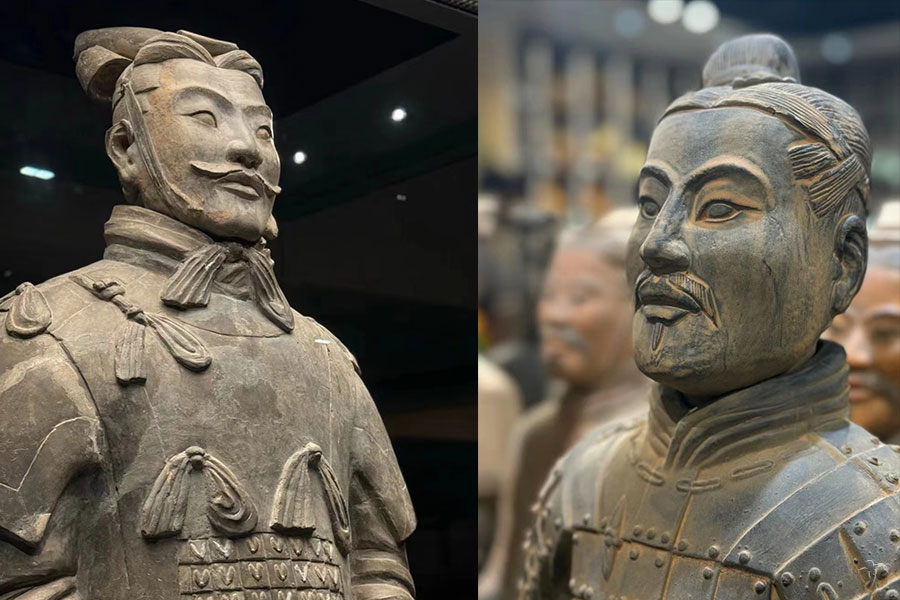
The General: dual long jacket, crest hat, long pant, thigh protector, pair of boots with square opening tipping and uniform head, looking grand and awe-inspiring.
The Middle-level Officer: two kinds of dressing.
- long jacket, thigh protector, boots with square opening tipping head, chest plate trimmed with lace and a double long hat;
- high collar gown clasped on the right side, thigh protector, boots with square opening tipping head and covered a piece of armor with smooth edge and lace.
The Junior Officer: long jacket, piece of armor, long hat, pair of shallow shoes and thigh protector. Some do not wear armors and fight in light equipment.
The Soldier: three kinds of dressing.
- long jacket, pair of shorts, pair of shallow shoes, combed a tight roll of hair at the right side of the head, assembled with leggings and armor on the back;
- similar to the first one but with red handkerchief on the head;
- similar to the second one but with combs flat bobs on the back of the heads instead of wearing handkerchiefs.
The Cavalries: Hu dress, waist-length armors and round small hats, hold bow and arrow in one hand, with the reins in the other hand.
The Drivers of Chariots: dress in two ways.
- long jackets, armors, long hats, shallow shoes and armed with leggings;
- strict protection to the body: square plates protecting the neck and the two arms to connect with hand guards.
Bronze Chariots and Terracotta Horses
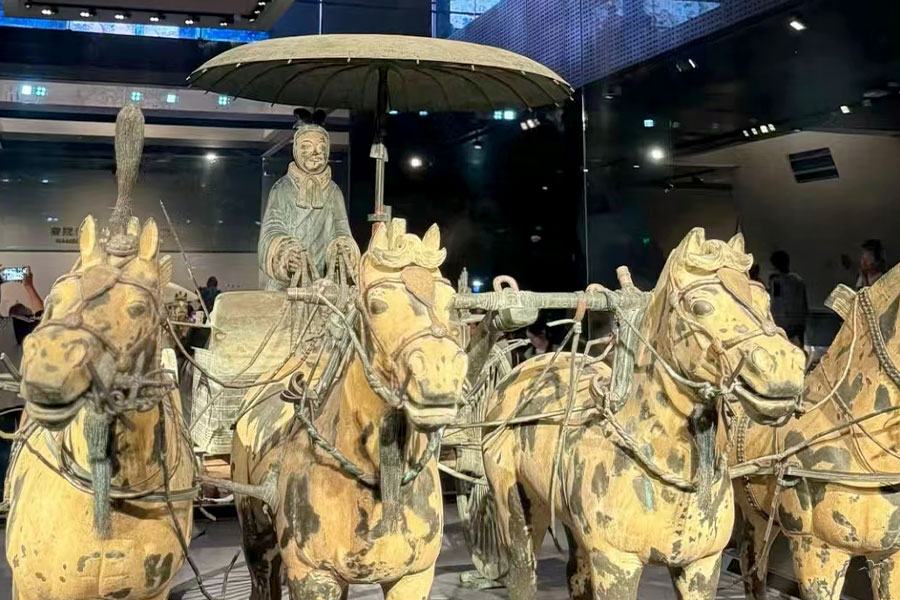
Out of the three pits composing the Museum of the Terracotta Army and Horses, two large scale-models of bronze chariots and horses have been unearthed in 1980, at around 20 meters east of the Mausoleum of Emperor Qin Shihuang. Damaged by the natural erosion and humidity of the last 2,000 years for there were made of wood, bronze and cast bullion, the two chariots were first unveiled to the public in 1983 and 1988. Adding to the nation's great archeological treasure, the two chariots are a jewel of art directly coming form the Qin Era.
- Chariot No.1: (225 x 126 x 70 cm) two-wheeled vehicle drawn by a team of four strong horses, only one seat for the driver with a large umbrella providing shade from the sun.
- Chariot No. 2: (317 (long) x 106 (high) cm) larger one, horses richly adorned with gold and silver gear, three windows, roof umbrella-shaped.
Various bronze crafts excavated
The archeological researches made on the three pits since the first discovery in 1974 made a lot of gorgeous discoveries of bronze crafts directly coming form the Qin Dynasty. Bronze arms including swords, spears, scimitars, billhooks, halberds, curved knife and a large amount of crossbows and arrowheads make most of scientists' findings in the pits. Despite the 2,000 years old of the arms, their conservation had been one of the greatest noticed by archeologists for many of them are still glittering, sharp and new, an exquisite weaponry which shows that the metallurgical technology at that time had been already advanced. For example, the surfaces of the swords were coated with an oxide film 10 microns thick containing 2% of chrome, an oxidation technology which wasn't mastered until recent times and requires both complex equipment and processes in our modern times: a discovery making all scientists wonder about artisans secret recipe.
Bronze Cranes
In an accessory pit (Pit No. 7, only 30 square yards) located at just a few meters away from the actual Mausoleum were found a lot of bronze cranes, birds, wares, etc… Discovered by villagers, the unearthed crafts are part of the history of the Qin Mausoleum's archaeology. Directly referring to Chinese traditional culture, the crane's position is second after the holy phoenix that can be seen on many art crafts, brocades or architectural ornaments in China. King of longevity (so does the tortoise), the cranes reflect Emperor Qin Shihuang's long and cherished wish for immortality.
Acrobatic Figures (Baixi Yong)
By excavating the pits, scientists found some curious terracotta warriors in acrobatic positions together with the utensils they used for performance. Although being damaged by the last 2,000 years, the figures can still be analyzed Naked from the waist up and wearing thick short skirts, the acrobatic sculptures are fainting to play wrestling, weight lifting, dancing and other performances. These acrobatic figures are very different from the solemn-looking Terracotta Warriors in terms of gesture, dressing and expression. There discovery add a new group to the Qin Terracotta Warriors, supposedly showing us the colorful acrobatical art and entertainment that used to proceed in the Imperial court of Qin Shihuang.
Xi'an tours
Quick Questions
Our team is waiting for your questions. Please feel free to ask us any questions you might have about our China package tours, Chinese culture, or the sites available. We will gladly help you with any special needs you might have and all questions, like our trip designing is completely free of charge.



